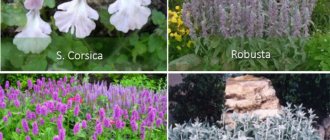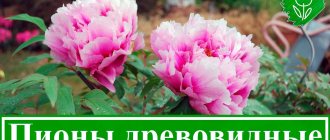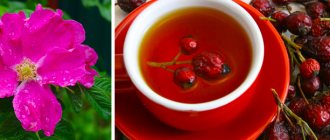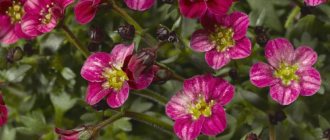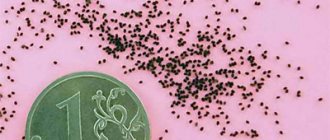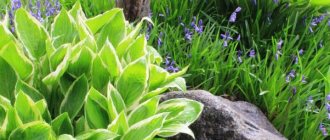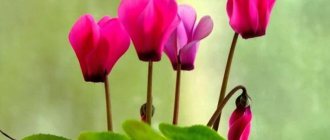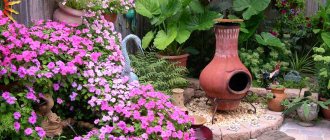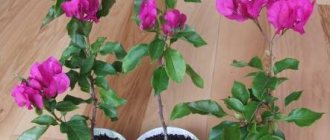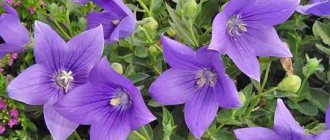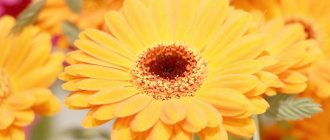One of the most unusual plants, indispensable in creating delightful flower arrangements, is the hare's ear flower. The leaves of the charming plant have a fluffy white-gray coating, which is why they resemble soft animal ears. Sometimes the flower is called sheep's or ram's ears. The botanical name of the original culture is woolly or Byzantine. This is an ornamental perennial from the Lamiaceae family, which naturally lives in coniferous and mixed forests. An unpretentious flower is a welcome guest at any summer cottage. The decorative appearance of the flower allows you to create magical compositions, where the chickweed looks like a silver fluffy carpet against the backdrop of bright and colorful plants. Woolen bushes not only decorate household plots, but are also grown to obtain a medicinal crop, since the healing properties of hare's ears are widely used in folk medicine.
Hare's ears plant: description and varieties
Woolly chistets or popularly “rabbit ears” is a low herbaceous perennial crop with spike-shaped peduncles. A flower with pubescent bluish-green leaves most often grows in temperate climates. It can be found in the Caucasus, Europe, Crimea and America.
Botanical description of the hare's ears plant
- The herbaceous bush rarely grows above 20 cm in height. The peduncle has a tall stem that stretches up to 60 cm.
- The inflorescence has the shape of a spike 1 cm in diameter, blooms with small inconspicuous pinkish-purple flowers. The inflorescences begin to bloom in June and continue until September.
- The oblong shape of the plant is given to the opposite thickened leaves that make it especially attractive and decorative. The color of the leaves is green, with a slight bluish tint, which is given to them by small fibers, creating a felt effect. Externally, the leaves resemble the “woolen” ears of an animal. They are soft and velvety to the touch and very pleasant to touch. At the base, the leaves are collected in a rosette.
- The root is vertical, powerful.
- The fruit of the hare's ear flower is triangular nuts.
Woolly chistets has several decorative varieties, which are most common in our region:
- Silver Carpet - this variety is good for group plantings. Silvery dense bushes planted in a group create the stunning effect of a soft and fluffy silver rug. The bushes are low, up to 15 cm in height, and do not form inflorescences.
- Sheila Macqueen - the variety is named after the famous florist. The plant is not tall and does not form inflorescences.
- Cotton Ball - the variety forms low inflorescences that resemble cotton bolls in appearance.
- Striped Phantom is a spectacular variety, the main feature of which is the presence of wide light stripes on the pubescent leaves.
- Primrose Heron – the green fluffy leaves of this variety turn yellow in the fall. Blooms with pink small flowers.
- Big Ears is a beautiful and charming variety with large leaves, up to 25 cm in length. Externally, the leaves really look like large velvet bunny ears.
- Silky Fleece is a low-growing crop with small fluffy leaves up to 10 cm in length.
Sansevieria for home and office: flower care and propagation
In the interior of residential or public buildings, you can see an indoor plant, sansevieria, which is striking in its ease of care and endurance, which is excellent for landscaping homes and offices. And to the surprise of those who are far from botany, it belongs to the asparagus family. About sixty species are known in nature. At home, we most often encounter and observe the growth of the many species of these flowers without a stem, three species: Sansevieria three-striped from the Latin name - trifasciata, cylindrical and large.
In common parlance, sansevieria is called differently: in Russia - “pike tail”, in England - “mother-in-law’s tongue”, in America - “snake plant”, and in its homeland, South Africa - “donkey ears”. The herbaceous plant that has settled in our homes is a perennial with a strong creeping rhizome and long, straight, dense leaves.
The color of the leaves is usually striped, depending to a greater or lesser extent on the variety and species, sometimes with a yellow bordering stripe. During flowering, “mother-in-law’s tongue - pike tail” releases into the light of God an arrow with inflorescences - small openwork, collected in a brush with white fragrant flowers with a slight hint of green.
Rabbit ears - healing properties
Hare's ears are an ornamental plant that is successfully used as a medicinal herb. Both stems, leaves and flowers have healing properties. They contain a high concentration of essential oils, tannins, pectins and flavonoids. The plant is also rich in vitamin C and organic acids. Due to their rich composition, hare ears are used to treat many diseases:
- An infusion of the roots of the plant has an antispasmodic effect and relieves inflammation.
- An infusion of dried leaves of the woolly chest is used for diathesis, gout, scrofula, as a remedy for the treatment of skin diseases.
- Fresh leaves are applied to wounds, cuts, and bruises. Thus, quickly stopping the bleeding. Applying hare's ear leaves anesthetizes the affected area and relieves inflammation in it.
- The plant is successfully used during labor, helps in stimulating uterine contractions, and has a hemostatic effect.
- Alcohol tinctures are effective in treating the nervous system as a sedative.
Contraindications and side effects of bunny ears
Despite the wide range of uses of the plant, woolly chickweed cannot be used to treat people suffering from hepatitis, chronic kidney disease, and bronchial asthma.
Decorating the costume
You can glue ready-made eyes and a nose to the bunny's hat. They will give the costume a decorative and unusual effect. A bunny costume for a boy can be decorated with blue ribbons, sewn-on carrots, shiny rhinestones, and beads. A girl's costume is decorated with bows, pink ribbons, and gold appliqués. New Year's outfits are decorated with tinsel. Costumes for adults can be left in their original condition. They are complemented only by exclusive shoes. The most important decoration of the costume is the ponytail. It is made from a pompom, a piece of faux or natural fur.
Stopping at a kiosk, my daughter and I saw a bunny costume on sale - and Dasha immediately decided that for New Year she wanted to be a bunny. After looking at the quality of the ears, I offered to sew the suit at home. We bought a plastic headband, faux fur for the skirt and white jersey for the skirt. We also needed fleece in two colors: white and pink. We both found houses - and work began to boil.
To start, I measured the headband and cut out a strip of white fleece fabric twice the width of the headband plus seam allowances. I put a strip on the dublerin. I folded them lengthwise face to face and sewed the edges of the halves so that they took on the appearance of a tube with closed ends - I left the middle unstitched. Using the handle of a comb (a thick knitting needle), I turned the ends out and pulled the fabric tightly over the headband. I sewed the middle by hand.
I ended up with a headband covered in white fabric, to which I now had to sew the ears. I got the ear pattern by tracing one of the ears of the printed mask:
Using it, I cut out four pieces with seam allowances - in the lower part I left a larger allowance (2-3 cm). I placed all the details on dublerin, and manually sewed pink areas on two of them. I placed the front parts of the ears on thick padding polyester and stitched them on all sides except the bottom, at a distance of 1 mm from the edge.
I folded the finished ear parts in pairs face to face, stitched them together on three sides and turned them right side out. I wrapped the lower sections of the finished parts inside the ears and manually sewed them onto the headband.
With three-layer synthetic padding inside, the ears fit well on the top of the head - the thick adhesive pad, which I bought specifically for this purpose, was not useful to me.
This is an accessory to my first homemade fancy dress costume. I have never sewn anything like this before, but I have had the opportunity to make others, which you can see on my blog.
PS My second fancy dress was.
For various festive events or just a themed photo shoot, certain costumes or accessories may be required. Many of thematic attributes can be purchased in specialized stores. However, you can always build certain things yourself, while saving a fairly large amount of money. In our article, we will introduce readers to the process and technique of making such an accessory as bunny ears, which we will make with our own hands.
There are a large number of different techniques for making a bunny accessory with your own hands. We will try to look at the most popular and affordable ways to create animal ears.
How to plant bunny ears in the garden
To plant the plant, you should choose a sunny or slightly shaded area in the garden at midday. Woolly Chest does well in dry areas. Excessive moisture is detrimental to the root of the plant, and the leaves lose their decorative effect and the main feature - pubescence. The soil for planting should be well-drained, light, alkaline or neutral acidity.
Planting stages:
- The area for planting seedlings is prepared in advance. You should dig it up and add fertilizer: 20 g of potassium sulfate and 50 g of superphosphate.
- In May, holes are dug 30 cm deep.
- The bottom of the hole is filled with drainage made of pebbles, stones, expanded clay and sprinkled with earth mixed with humus.
- The seedling is placed in a planting hole and covered with earth.
Kinds
Monilaria moniliformis
A small shrub consisting of granule-like shoots. There are two types of leaves - small, almost fused and long, which break the primary leaves at the beginning of the wet period. Blooms with white or yellow flowers. The flowers have a weak aroma. They grow on separate peduncles. When the leaves dry, they form a parchment-like skin that protects the plants from dehydration.
Monilaria monilareformes
Monilaria obconica Maerpoort
The succulent, which forms a tussock with a diameter of 30 cm, has short stems with a bead-like structure. The leaves are bright green, with a characteristic pearl tint. This species most closely resembles lithops - “Living Stones”. It blooms with small white or pink flowers. During the dormant period, only stumps are visible, looking like dried roots.
Also read: Pachypodium or Madagascar palm care and popular types
Monilaria obconical
Monilaria scutata
A hummock-shaped succulent with thick roots that connect to each other like a necklace. The leaves are paired of two types: the first is rounded, the second is more ordinary, elongated. The second pair of leaves diverges in a V-shape. Young leaves have a reddish tint, mature leaves are green, the skin is lumpy, characteristic of all Monilaria. It blooms with single, medium-sized 2.5-3.5 cm in diameter with 5 unequal, tuberculate sepals. The color is varied: from white with a yellow border to purple.
Monilaria scutea
Monilaria pisiformis
It is distinguished by taller knotty stems. Otherwise it has all the usual signs of Monilaria. Blooms from May to August for 2-3 weeks. The second pair of leaves are scissor-shaped, semicircular on one side, and have a pearly tint.
Monilaria pistillate
Bunny ears: care
The plant attracts flower growers and summer residents not only with its original appearance, but also with its incredible unpretentiousness in cultivation:
- The flower tolerates drought remarkably well and does not need abundant frequent watering. It will be enough to water the bushes once a week, without touching the leaves with a stream of water. In dry summers, the frequency of watering increases to 2 times a week to prevent shedding of leaves.
- The plant is fed 1-2 times a year, in the spring. Organic fertilizers are used (chicken manure, cow manure) mixed with ammonium nitrate. Organic matter can be replaced with complex fertilizer.
- After planting, in order to avoid the growth of weeds, the bushes are hilled up and the soil is periodically loosened in the area where the hare's ears grow.
- The plant grows quite quickly, capturing new territories. To avoid unwanted grass growth, remove excess bushes.
- Inflorescences that have bloomed must be pruned, since ripened buds can lead to the decay of the bush and loss of its decorative appearance.
- As the plant matures, empty areas appear in the center of the leaf rosette, which disrupt the integrity of the planting. Experienced flower growers recommend periodically planting young seedlings in areas of “bald spots” in order to return the group planting of hare’s ears to their former density and beautiful appearance.
- The woolly chist is resistant to frost, but in severe winters it requires shelter. When there is a thaw, the cover is removed to avoid damping off of the roots.
Peculiarities
Pilea plant
Chistets (the second name is stachys) is a fairly popular plant that is grown for various purposes. Its main purpose is to use it as decoration and decoration of the garden area. This plant is often called "sheep's ear" because the above-ground part is quite thick and fluffy.
It is worth taking a closer look at the description of this unusual culture. Chistets is a perennial plant. It has rather large leaves of an oblong shape, while they taper downwards. The plant usually reaches one meter in length. Flowers can be of different colors - white, yellow, purple, pinkish or with a lilac tint. Their shade depends on the variety. The flowers gather in false whorls, forming inflorescences resembling spikelets. The fruit of stachys is a triangular nut, which has an ovoid or oblong shape. Flowering usually lasts from early summer to autumn.
It is worth noting that not all varieties are in demand, because one of them is the weed - annual stachys. This is a dicotyledonous plant that quickly fills large areas.
This weed is often found in forest-steppe areas and harms grain crops. It usually grows in loose soil with moderate humidity.
Reproduction of hare ears
Hare's ears are easily propagated by both vegetative and seed methods.
Propagation of hare's ears by seeds
- You can buy hare's ear flower seeds at a flower shop. They are sown for seedlings in March, using a spacious container with sand and peat. Before planting, the soil is moistened and the seeds are scattered on top, sprinkled with a thin layer of moist soil.
- After just 3 weeks, the first green shoots appear. A young seedling differs in appearance from an adult plant: the leaves of the seedlings do not have an edge. Care for seedlings is minimal; they need watering with warm water and room temperature.
- As soon as the bushes get stronger, they can be transplanted into open ground. It should be remembered that the hare's ear seedling is transferred to a new place along with a lump of earth, so as not to damage the delicate root of the plant.
- In the southern regions, seeds are planted immediately in open ground, without growing seedlings.
Method of dividing a hare's ear bush
Mature bushes that have reached the age of 2-3 years can be easily propagated by dividing the mother plant. The bush is dug up together with a lump of earth, divided into several parts. Seedlings are planted at a distance of 20 cm between the bushes.
Cuttings of hare ears
Sometimes gardeners use propagation by cuttings. Strong shoots with lower leaf nodes are selected, cut off and placed in a mixture consisting of sand and peat. You need to water the cutting carefully, trying not to get it on the leaves, so as not to cause them to rot. Rooting of the cutting occurs in 2-3 weeks.
Preparing for winter.
As mentioned above, chistets are not afraid of frost. In winter it feels great and pleases with its beauty. Closer to spring, it happens that the old part of the plant in the center of the bush becomes bare. In order to improve the situation, it is enough to dig up this part of the plant, and fill the place with humus, on which to carefully plant several young shoots of the plant. It is not advisable to prune the plant to zero for the winter; the chickweed does not like this.
Views: 7099
Synonyms:
chistets, sheep ears, bear ears
Short description, main qualities:
You definitely want to stroke the amazingly delicate, fleecy silver “ears” of the stahis. The leaves are thick, oblong-linear, narrowed towards the base, white-tomentose, which gives them a special decorative effect. Stachys forms solid gray-silver fluffy mats.
Homeland:
the south of the European part of Russia, Transcaucasia, northwestern regions of Turkey and Iran.
Potential plant sizes:
30-60cm.
Flowers.Flowering time:
The flowers are small, pink-purple or lilac, each up to 1 cm long, collected in dense, spike-shaped inflorescences. Blooms in June-September.
Conditions of detention:
The plant is unpretentious, feels good in partial shade, forming thickets up to 30 cm high. By mid-June, due to the appearance of flower stalks, Stachys reaches 60 cm in height. Strong wind and rain bend the flower stalks to the ground without breaking them, and when the weather changes to calm and sunny, the flexible woolly stems rise again. Stachys is propagated by seeds and by dividing the bush. The plant can be divided from spring to autumn. The divisions quickly take root, and when divided in spring, they bloom in the same year. Chistets easily endures the winter, and in the spring it pleases us with silvery islands among the dark, damp earth. The only thing that can destroy it is waterlogging, which causes the plant to rot.
Use in landscaping:
Decorative with spectacular leaves with a silver tint, they can serve as decoration for any plantings of perennial and annual plants. It is used in mixed plantings near bushes, in borders, on rocky areas, in carpet compositions.
Don't forget to click the "Like" button!
Diseases and pests of hare ears
Provided proper watering, the woolly chickweed practically does not get sick and is not attacked by pests. Excessive soil moisture and planting in shaded areas of the garden make the plant susceptible to fungal diseases. Fungicides are used to combat the fungus. If the fungus cannot be defeated, the affected bush should be dug up and burned to prevent infection of the entire planting.
How to create favorable conditions for growing from seeds?
To grow stachys, you need to prepare the soil with good drainage; if the soil is too damp, it will quickly rot and die.
It also prefers open areas with a lot of light, so it is widely used in alpine slides among summer residents, in carpet plantings, as well as in borders, it looks very elegant and noble.
To preserve the decorative appearance of the bush and avoid self-seeding, you need to cut off the flower stalks, preventing the formation of buds.
Also, when the lower leaves disappear, this is a signal that the plant has aged, you need to replant young bushes in order to avoid bald spots.
Woolly chistets, aka stakhis, aka sheep ears:
Combination of bunny ears with other plants
Velvety and fluffy bunny ears are a beautiful addition to any floral arrangement. Densely planted felt foliage adorns flower beds, flower beds, garden paths, borders and alpine slides. Woolly chistets sets off the beauty and tenderness of lavender, marigolds, capmanula and ageratum. Silvery bushes are magnificent against the backdrop of lush greenery; they are used by landscape designers as a ground cover crop. The plant is often used to create bouquets. The perennial plant looks attractive until late autumn. The plant can withstand frost and does not lose its leaves in the winter; it looks incredibly gentle against the background of snow.
If you want to decorate your garden or summer cottage with an unpretentious, original and beautiful perennial plant, hare's ear grass is an ideal perennial, caring for which is not difficult, but only brings pleasure.
The soil
Those who decide to have such a plant should pay special attention to the soil. In order for the “ears” to fully develop, you need to create a special substrate consisting of the following components: clay-turf soil, finely broken red brick, zeolite, leaf soil, coarse river sand
You can also add small sea pebbles to the mixture. High-quality expanded clay drainage should also not be neglected. This will ensure the necessary ventilation in the soil.
There is no need to replant the plant too often. It is enough to carry out the procedure once every 3-4 years. When transplanting, you need to completely replace the kidney and add fresh drainage. You should not choose a pot for monilaria that is too wide, otherwise the plant will not bloom every year.
In order for “bunny ears” to fully develop, it is recommended to periodically fertilize them with mineral fertilizers. You can buy them at any flower shop. Old plants with a lot of dry leaves should be trimmed periodically. All cuts are processed with charcoal.
A student at the Vietnam Police Academy shared how she takes care of her facial skin.
Rare shot: Viktoria Isakova showed her grown-up daughter from Yuri Moroz (new photo)
It’s good to wash often: myths about shampoo and hair care that only harm
“Sheep ears” in the flowerbed
Chistets Byzantina, also known as Stachys woolly, also known as “sheep’s ears,” is a charming and unpretentious plant with silvery fluffy leaves.
Chistets woolly. Photo by the author
It settled in my garden a long time ago: a neighbor shared the shoots, which have since turned into luxurious fleecy “rugs” and spread in different flower beds. Of course, these “ears” also came to the new garden.
The plants are still small, but next season they will form a nice lawn, and in a year the chickweed can be spread further.
Young plant of chistets. Photo by the author
There are countless options for using this plant in flower beds. This is an excellent border : the bushes without flower stalks are not tall, grow very densely and, due to the elegant silver color of the foliage, create an impressive frame for a flower bed or garden path.
The woolly chickweed looks great and feels great in rockeries , on retaining walls , and in rocky gardens . It is undemanding to the soil, tolerates drought easily, loves light - an ideal plant for a rock garden.
Chistets seeds and seedlings are presented in our catalog by various online stores. View the selection.
On the other hand, it also grows well in partial shade, and therefore can be successfully planted under bushes. In such a composition, the cool color and unusual texture of chistets leaves can become a winning accent. It is only important to make sure that the shadow is not too thick, and that the neighbors are undemanding when it comes to food. On too fertile soil and insufficient lighting, sheep's ears can turn green and lose their charm.
with other decorative foliage plants leave endless scope for imagination . Here, for example, is how it nestled between my hostas and cypress spurge on the shore of a pond
Chistets with hostas by the pond. Photo by the author
The Chistets' own flowers are nothing special, and the tall, often unstable peduncles make the plantings untidy. So I try to cut them off; when the plant is grown as an ornamental foliage, this procedure is very desirable. Moreover, caring for the cleaner actually ends there.
But how expressive the luxurious, silky foliage is against the background of other flowers! Thanks to its neutral color, chistets are appropriate in almost any composition, and will look new every time. I especially like restrained, noble combinations with blue and white flowers, but red, yellow, pink, and lilac look, perhaps, no worse. Here, admire, for example: chives against the background of blooming chives
Chistets woolly, Stahis, Ram's ears
Byzantine chickweed (Stachis bizantina), or woolly chickweed (Stachis lanata) is often called stachis.
Stachys translated from Greek means ear of corn. The plant is popularly nicknamed “ram’s ears.” The plant received this name for a reason: to the touch it strongly resembles the ears of sheep and rams.
Chistets Byzantine is a perennial herbaceous plant belonging to the family Lamiaceae, or Lamiaceae. This is an unpretentious, but catchy and colorful plant.
The plant is characterized by a tetrahedral stem and ovate-lanceolate elongated leaves with an opposite arrangement.
Peduncles appear in May-August and reach a length of 40-50 centimeters. They bear small flowers characteristic of the family, collected in an inflorescence of spikes, not particularly decorative. They are painted in pinkish or purple shades.
Spreading
The homeland of Stachys is Asia Minor and the Balkans. Here it is found in the wild. Over time, the woolly chickweed spread to Europe and Asia, where it became a cultivated plant.
“Ram ears” are very popular among Russian residents and are found in almost every garden. This plant grows well in the middle zone, without requiring shelter in winter.
Chistets Byzantine is an unpretentious plant that does not require special care. It grows on any soil, but prefers fertile sandy loam soils, where it grows luxuriantly and takes on a more decorative appearance.
The plant is drought-resistant and loves dry, well-drained places. External irrigation turns stachys into a “wet chicken”. Overwatering can cause rot.
Prefers sunny areas, but does well in light shade. Does not require watering or fertilizing.
The woolly chist quickly captures new territories thanks to its creeping and rooting shoots. During the season, “lamb ears” can advance half a meter. Therefore, the main care consists of removing excess shoots and peduncles.
Peduncles must be cut to prevent fruiting, which can lead to unwanted self-seeding. In addition, flowering causes the plant to stretch and lose its decorative appearance.
But although the chickweed is somewhat aggressive, it is not a dangerous weed: its root system is located in the top layer of soil and is easily pulled out by hand.
Diseases and pests
Diseases and pests very rarely affect Stachys woolly.
Reproduction
Chistets are easily propagated by seeds, stem cuttings or by dividing the bush.
Application in floriculture
Lamb's Ears are prized as an excellent ground cover. The plant acquired decorative properties thanks to its exotic, densely hairy leaves, distinguished by an unusual steel-gray color. The pubescence gives the leaves the thickness and resemblance to sheep's ears.
Silver-white bushes of chistets look beautiful against the backdrop of surrounding greenery. This perennial often occupies the foreground of the flower garden, forming colorful cushion-shaped compositions and attracting the eyes of passers-by.
Chistets compares favorably with many other ornamental plants, as it looks attractive from early spring to late autumn. This is facilitated by the fact that the leaves of the plant do not fall off in the winter, but overwinter under the snow.
“Ram's ears” go well with other plants and look great in rock gardens and rock gardens.
The beautiful pubescent silver leaves of the chistets dry well and can decorate both flat and three-dimensional compositions of dried flowers.
You can order plants for your garden in the plant catalogue. You can see photos of garden flowers in our photo gallery. You will find a lot of information about a variety of garden flowers on our blog.
